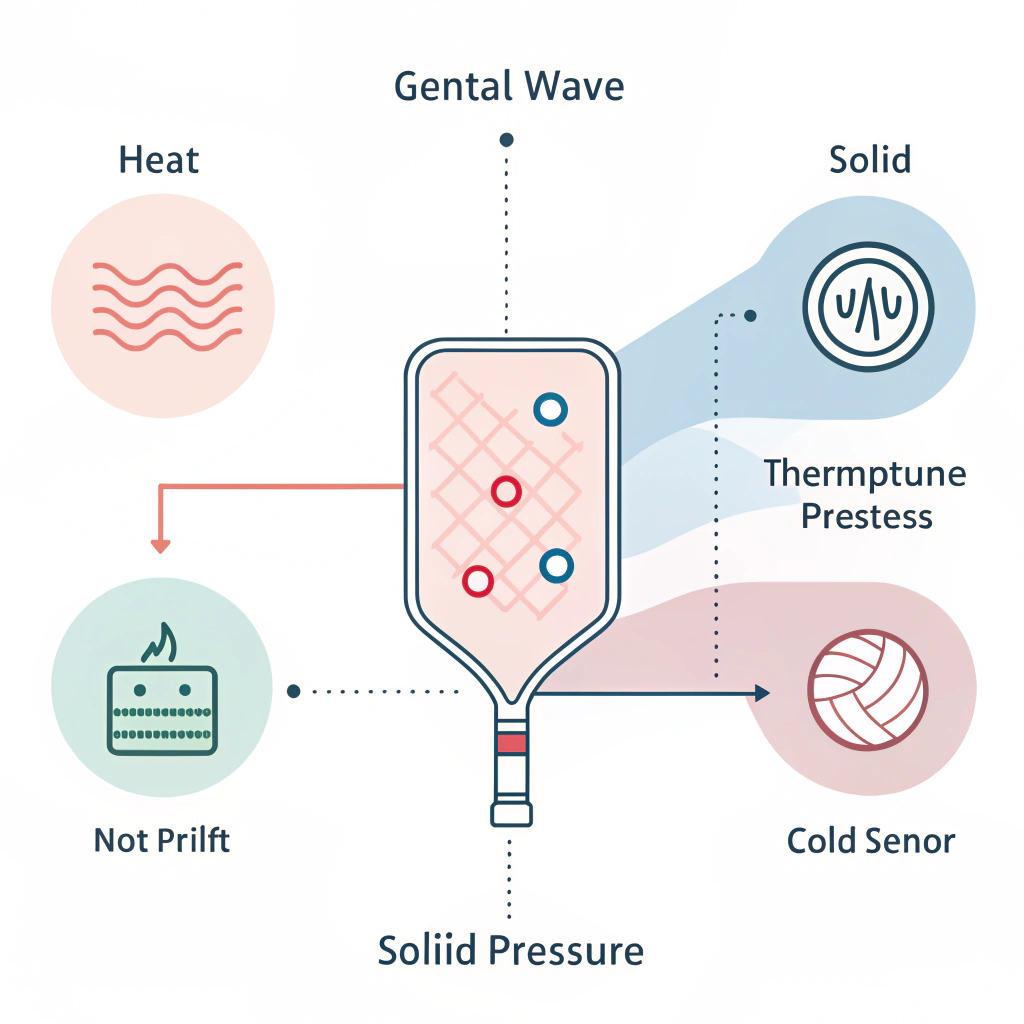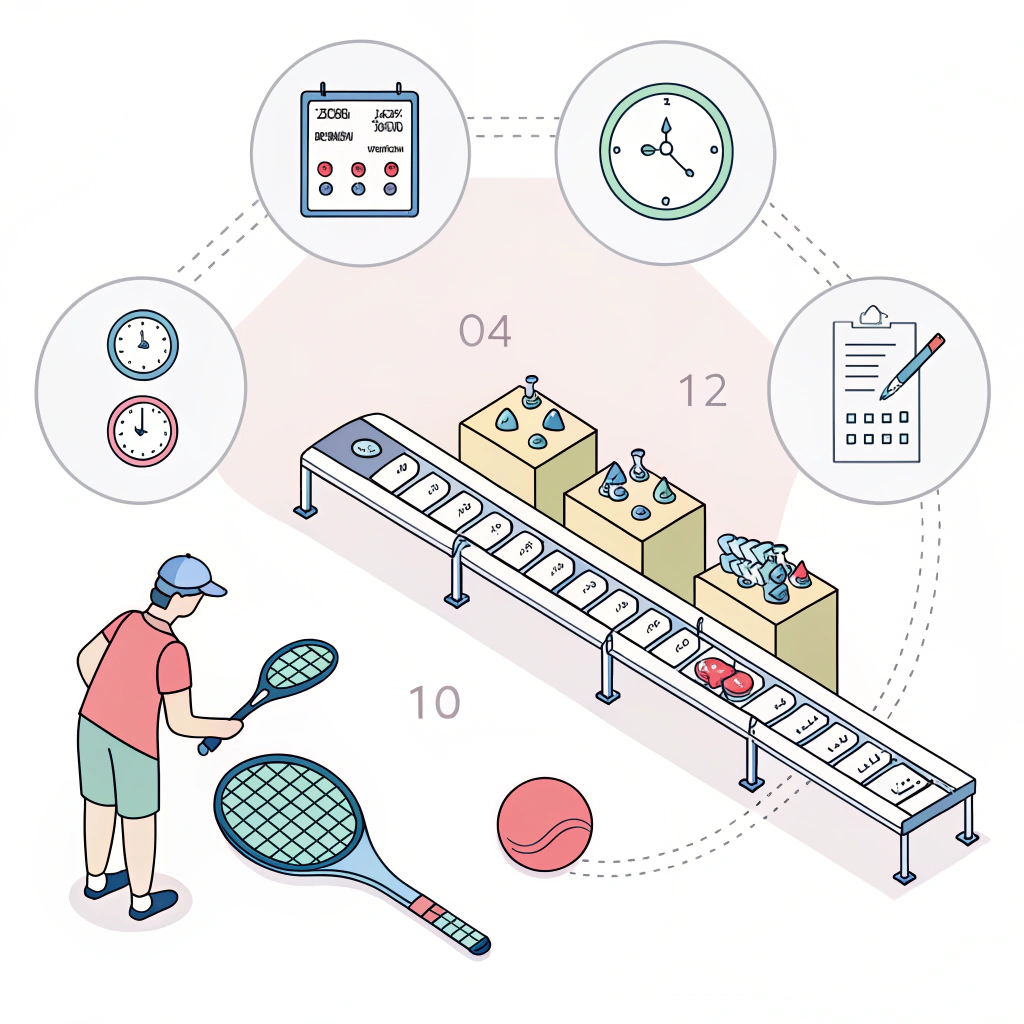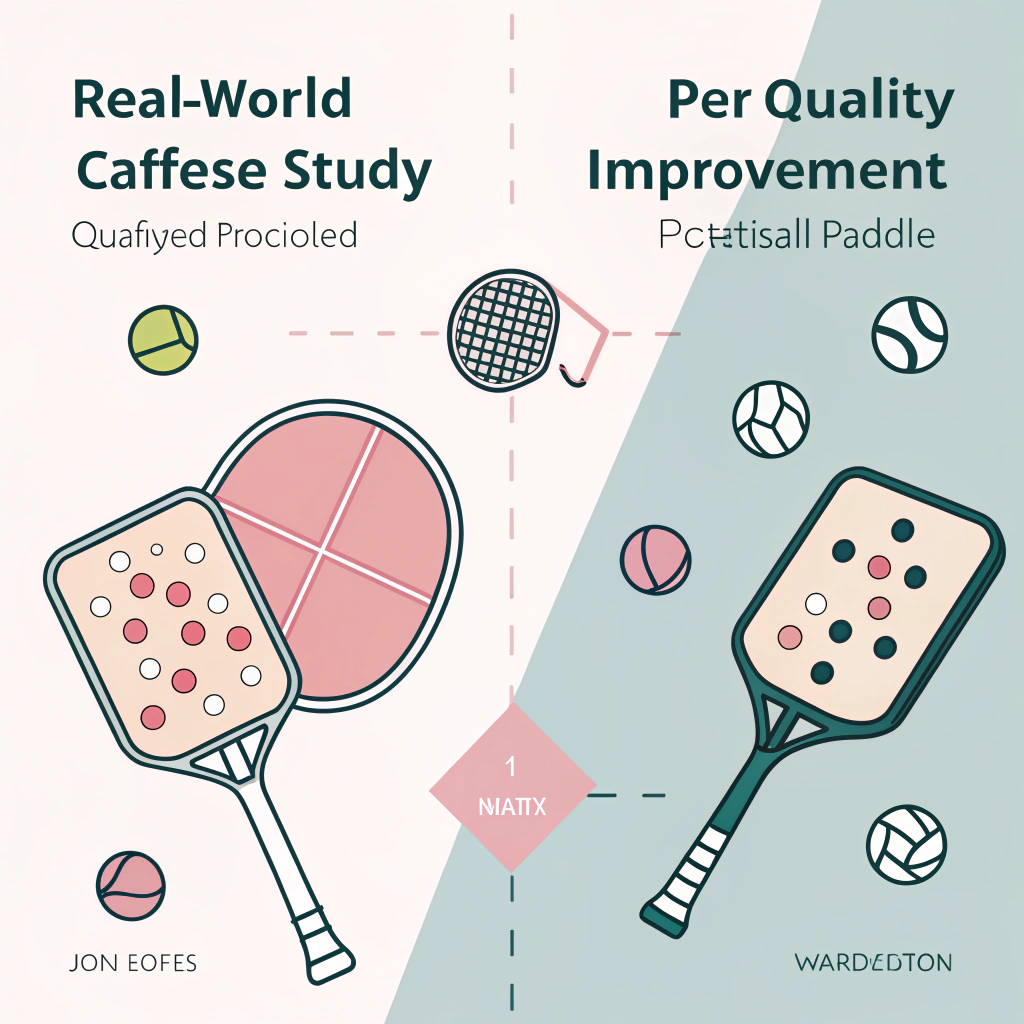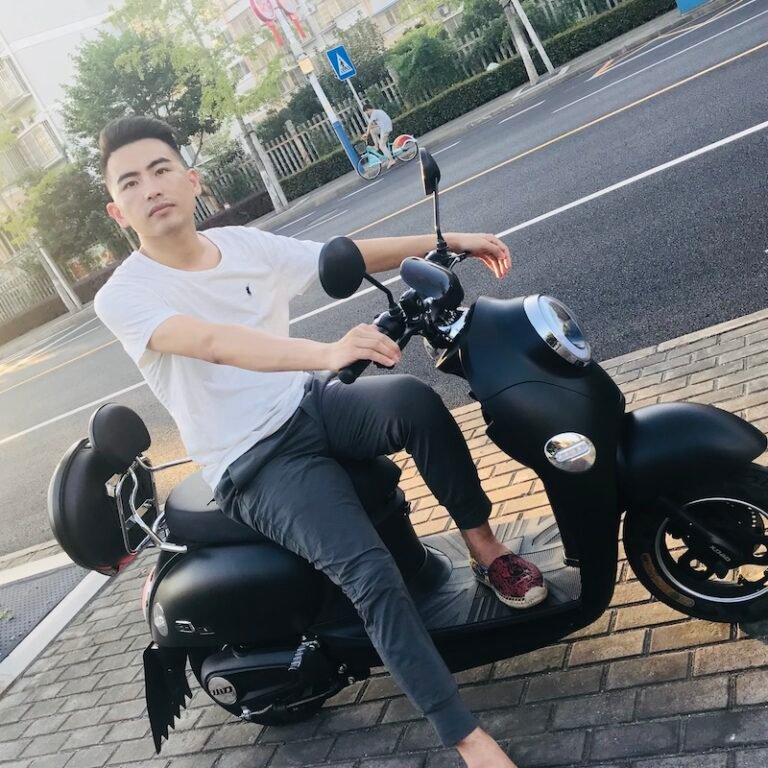Quick Answer: In high-performance pickleball paddle production, understanding the pros and cons of hot pressing1, cold pressing2, and thermoforming3 is essential to minimize defects and optimize quality control. Comparing these processes can help quality assurance managers make informed procurement decisions by balancing production efficiency, material integrity, and surface finish quality.
In today’s competitive sports equipment market, especially in the realm of pickleball paddles, every manufacturing detail counts. Quality assurance managers and procurement specialists must weigh the strengths and limitations of each production process to ensure that the final product meets the strict durability and performance standards required by competitive and recreational players alike.
At NEX Pickleball, our commitment to precise manufacturing has led us to adopt multiple production techniques—including hot pressing1, cold pressing2, and thermoforming3. Each method has its own set of advantages, potential defects, and quality control considerations, which can directly impact product performance and durability.
The challenge for B2B buyers lies in selecting a process that not only optimizes productivity but also minimizes surface defects such as delamination, discoloration, and inconsistent core thickness. Here, we analyze the three main production techniques:
-
Hot Pressing
Hot pressing involves applying both heat and pressure to mold the paddle material. This process offers high production efficiency and strong bonding between layers. However, it can sometimes alter the material’s intrinsic properties, potentially affecting the paddle’s feel and impact resistance. Common defects include surface scorching or uneven pressure distribution, which may result in weak spots or inconsistent rebound force. -
Cold Pressing
In contrast, cold pressing shapes the paddle material at room temperature purely through mechanical pressure, preserving material properties and ensuring a high level of control over the paddle's thickness and structure. This method tends to yield a better ball feel and responsiveness but at the cost of longer production times and the potential for inconsistencies if pressure control is not precise. Variability in the applied pressure may lead to subtle surface defects that could affect performance. -
Thermoforming
Thermoforming uses controlled heat to soften materials before forming them into complex shapes with precise molds. This method is ideal for achieving intricate designs and optimal material distribution. While thermoforming can produce paddles with exceptional stability and performance, its longer production cycle and higher capital investment can translate to a higher risk of uneven cooling and warping if not managed carefully.
To aid the decision-making process, the following table summarizes the key aspects of these three production methods:
| Process | Advantages | Disadvantages | Common Defect Causes | Key Quality Control Measures |
|---|---|---|---|---|
| Hot Pressing | - High production efficiency - Strong and durable paddles - Excellent impact resistance |
- May compromise material feel - High equipment costs |
- Surface scorching - Uneven pressure distribution |
- Continuous temperature and pressure monitoring - Regular equipment calibration |
| Cold Pressing | - Precise thickness and structure - Maintains inherent material properties - Enhanced ball feel |
- Longer production cycle - Demands highly accurate pressure control |
- Inconsistent pressure application - Micro-imperfections on surface |
- Strict pressure control systems - Detailed manual inspections |
| Thermoforming | - Achieves complex designs - Precise material distribution - Superior shape and stability |
- Extended production time - Higher initial investment |
- Warping due to uneven cooling - Inconsistent mold performance |
- Optimized mold design - Consistent heating and cooling control |
The success of a badminton paddle lies in its uniformity and consistency. Even minor surface defects or structural flaws can diminish gameplay by reducing ball control and paddle responsiveness. Let’s explore some common defect causes and their remediation strategies:
Defect Cause: Uneven Material Distribution
- During hot pressing, improper heat or pressure levels can lead to surface scorching or uneven layer bonding.
- In cold pressing, slight variations in applied pressure might create thickness inconsistencies that impair the paddle’s balance.
- Thermoforming may experience warping if the material does not cool uniformly.
Quality Control Strategy:
Implementing precise, real-time monitoring4 systems is crucial. At NEX Pickleball, automated sensors track temperature, pressure, and cooling rates throughout the production process. This data is continuously analyzed to identify deviations before they affect the paddle quality. Additionally, batch testing and periodic manual inspections help catch anomalies that machine sensors might miss.
Defect Cause: Material-Specific Imperfections
Different materials such as 3K Carbon Fiber5, 12K Carbon Fiber, T300 Carbon Fiber, and various fiberglass types each bring unique challenges. For example, carbon fiber paddles may face issues with fiber alignment and resin distribution, while fiberglass layers might develop micro-fractures if not handled with detailed care.
Quality Control Strategy:
Tailoring quality control protocols to each material type enhances defect detection. Specialized tests such as ultrasonic inspections for fiber integrity and adhesion tests for composite bonding ensure that the structural properties of the paddle remain uncompromised.
For quality assurance managers evaluating manufacturing partners or production methods, here are some actionable recommendations:
-
Invest in Real-Time Monitoring:
Utilize advanced sensor arrays and data logging to continuously monitor the production environment. This minimizes human error and promptly addresses any deviations. -
Customized Quality Control Protocols:
Develop material-specific testing strategies. For instance, paddles made from carbon fiber composites might require additional fiber integrity tests compared to those using fiberglass. -
Regular Equipment Calibration and Maintenance:
Ensure that all manufacturing equipment—from hot presses to thermoforming molds—is calibrated regularly. This not only maintains product consistency but also extends the lifespan of the equipment, reducing long-term costs. -
Pilot Testing Before Full-Scale Production:
Conduct pilot runs to identify potential defects and adjust production parameters accordingly. This approach allows for fine-tuning processes such as pressure settings in cold pressing or cooling cycles in thermoforming. -
Supplier Transparency and Collaborative Feedback:
Work closely with suppliers like NEX Pickleball, who offer detailed reporting on manufacturing parameters. Collaborative discussions on observed defects and remedial actions lead to continuous improvement and stronger business relationships. -
Leverage Advanced Materials for Better Performance:
Incorporate premium materials—like the various carbon fibers and composite systems described—to enhance paddle durability and performance. These materials, when paired with robust production methods, provide a competitive edge in the market.
Let’s consider a real-world scenario: A sports equipment distributor noticed a slight increase in surface defects on their paddle orders. By working closely with their manufacturing partner, they traced the issue to a minor inconsistency in the cold pressing process. The plateau in pressure precision led to variations in paddle thickness, which in turn affected the ball response. By recalibrating the pressure systems and introducing an extra layer of manual inspection at critical points during production, the defect rate dropped significantly. This not only enhanced product quality but also bolstered customer satisfaction and reduced returns.
This example underlines the importance of combining technological automation with traditional quality control strategies. It also demonstrates that even minor process adjustments can yield substantial improvements in paddle performance and safety.
In summary, the manufacturing process for pickleball paddles is a complex interplay of material science and production technology. Each method—hot pressing, cold pressing, and thermoforming—presents unique challenges that require tailored quality control measures and defect remediation strategies. It is crucial for B2B buyers and quality assurance managers to:
• Understand the inherent trade-offs of each production process
• Implement real-time monitoring and regular equipment maintenance
• Customize quality control protocols based on material characteristics
• Collaborate closely with reputable suppliers who prioritize transparency and continuous improvement
By adopting these strategies, procurement specialists can ensure the selection of high-quality paddles that not only meet but exceed market expectations. When making your next procurement decision, focus on suppliers who demonstrate rigorous control over production processes and a commitment to consistent product excellence.
People Also Ask
Q1: What are typical defects encountered in pickleball paddle manufacturing?
A1: Common defects include uneven material distribution, surface scorching in hot pressing, thickness inconsistencies in cold pressing, and warping or cooling issues in thermoforming, all of which can affect paddle performance and durability.
Q2: How can quality control measures improve manufacturing consistency in pickleball paddle production?
A2: Quality control measures such as real-time monitoring, regular calibration of machinery, tailored material-specific tests, and batch inspections can significantly minimize defects and ensure consistent product quality.
Q3: What are the advantages and disadvantages of hot pressing, cold pressing, and thermoforming in paddle production?
A3: Hot pressing offers high efficiency and strong bonds but may alter material feel; cold pressing provides precise thickness control and preserves material properties but requires longer production times and precise pressure control; thermoforming allows for complex designs and precise material distribution but comes with higher equipment costs and longer production cycles.
-
hot pressing: Read this article to understand the benefits and limitations of using heat and pressure in molding materials, including how it influences production efficiency and product integrity. Back to text ↩ ↩2
-
cold pressing: Discover insights into the room-temperature molding process that preserves material properties while highlighting its trade-offs, such as longer production times and pressure consistency challenges. Back to text ↩ ↩2
-
thermoforming: Learn about this process that uses controlled heat to form complex shapes, its advantages in design precision, and the challenges such as extended production cycles and equipment investment. Back to text ↩ ↩2
-
real-time monitoring: Understand how continuous sensor-based tracking of production parameters helps in maintaining consistency and quality, ensuring that deviations are detected and corrected promptly. Back to text ↩
-
3K Carbon Fiber: Explore detailed information about 3K Carbon Fiber—a composite material known for its balance of strength and weight—and its role in enhancing product performance in high-end manufacturing. Back to text ↩







